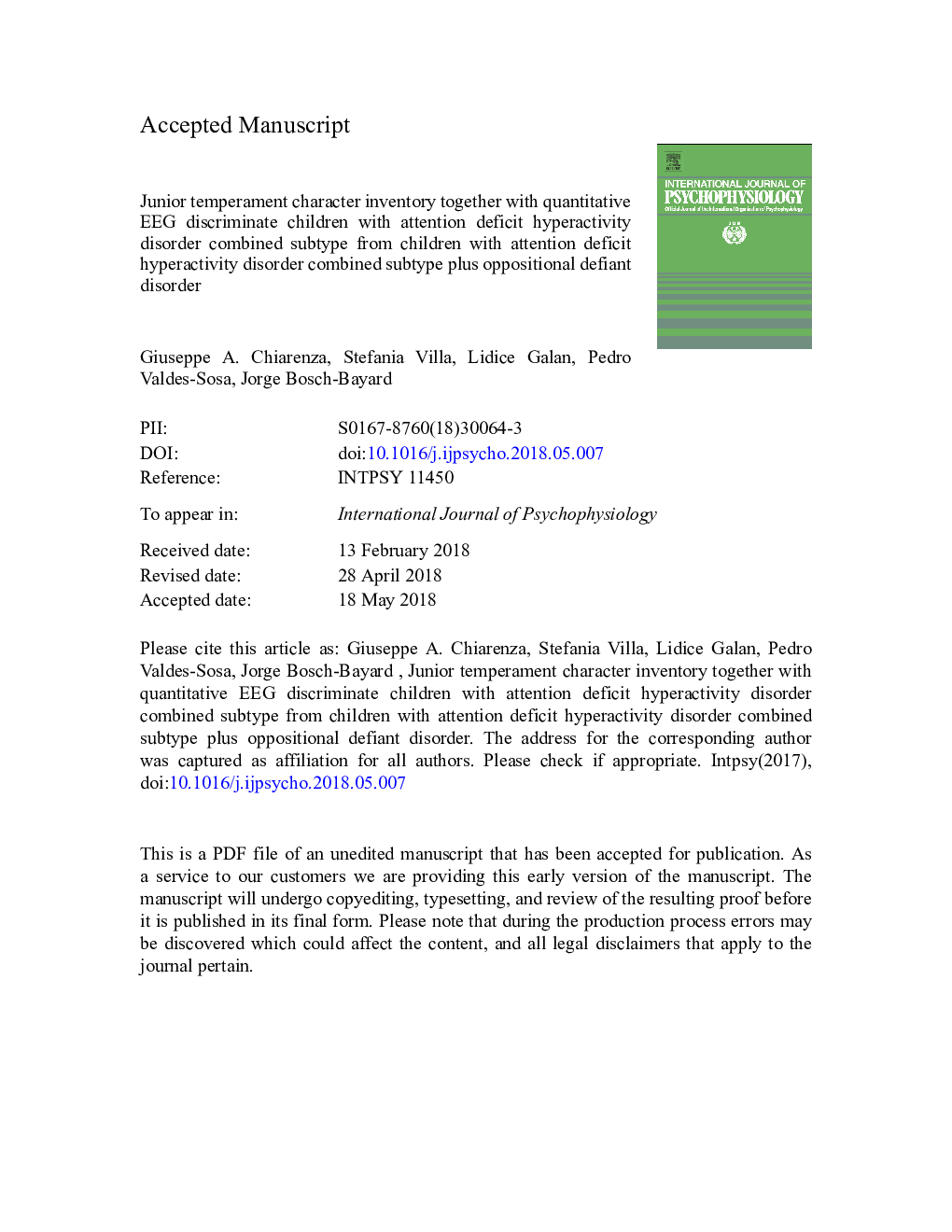| Article ID | Journal | Published Year | Pages | File Type |
|---|---|---|---|---|
| 7294786 | International Journal of Psychophysiology | 2018 | 39 Pages |
Abstract
28 ADHD_C and 22 ADHD_Câ¯+â¯ODD children who met the DSMV criteria participated in the study. JTCI and EEG were analyzed. Stability based Biomarkers identification methodology was applied to the JTCI and the qEEG separately and combined. The qEEG was tested at the scalp and the sources levels. The classification power of the selected biomarkers was tested with a robust ROC technique. The best discriminant power was obtained when TCI and qEEG were analyzed together. Novelty seeking, self-directedness and cooperativeness were selected as biomarkers together with F4 and Cz in Delta; Fz and F4 in Theta and F7 and F8 in Beta, with a robust AUC of 0.95 for the ROC. At sources level: the regions were the right lateral and medial orbito-frontal cortex, cingular region, angular gyrus, right inferior occipital gyrus, occipital pole and the left insula in Theta, Alpha and Beta. The robust estimate of the total AUC was 0.91. These structures are part of extensive networks of novelty seeking, self-directedness and cooperativeness systems that seem dysregulated in these children. These methods represent an original approach to associate differences of personality and behavior to specific neuronal systems and subsystems.
Related Topics
Life Sciences
Neuroscience
Behavioral Neuroscience
Authors
Giuseppe A. Chiarenza, Stefania Villa, Lidice Galan, Pedro Valdes-Sosa, Jorge Bosch-Bayard,
